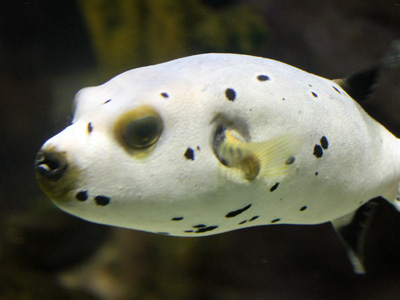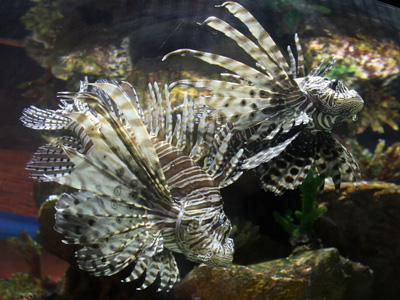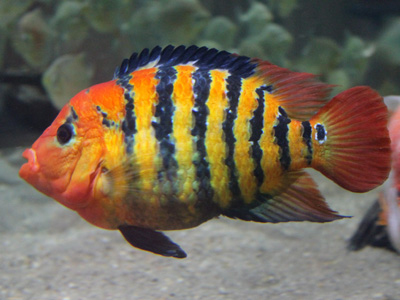Do you SEA the resemblance?
Do you SEA the resemblance?
The Greater Cleveland Aquarium is home to quite a variety of interesting aquatic life from all different parts of the world. With a touch of so many different places here, you’re bound to run into some pretty interesting looking little guys. Let’s call this one, celebrity doppelgangers for fish.
1. Dog Face Puffer – Dog
Imagine if a dog was stuck inside a fish body because that’s basically what makes up our friend, the Dog Face Puffer. He’s a native of the Pacific and calls our Indo-Pacific gallery his humble abode. The Dog Face Puffer gets its name from its appearance, and I bet you can guess why – he looks fairly similar to a canine! Oddly enough, Puffer fish have been known to have personalities similar to dogs. However, the Dog Face Puffer doesn’t have teeth like his furry friends, but instead has a fused beak-like structure, which it uses to crush its food.
2. Raccoon Butterflyfish – Racoon
Sounds like a weird combination, right? However, the combination of the traits from these two very different animals actually creates a beautiful aquatic creature. This fish gets its name from its highly recognizable mask over its eyes, nearly identical to that of a raccoon. Its beautiful yellow coloring and shape resemble a butterfly. This remarkable combination makes for an awesome addition to the Tropical Reef of the GCA.
3. Pterois aka Lionfish – Lion
This fish is given its name due to its venomous fins that create a look similar to the mane of a lion. The Pterois is found mostly in the Indo-Pacific, and can be found there within the Greater Cleveland Aquarium. If attacked or threatened, the fish will deliver a potent venom through it’s needle-like dorsal fins. The sting from this act is extremely painful to humans, sometimes resulting in nausea or breathing difficulties, but is rarely fatal.
4. Red Terror Cichlid – Tigers
He’s got the eye of the tiger, and you’re gonna hear him roar! Well, maybe more like blow bubbles, but you get the point. The Red Terror Cichlid typically sports a beautiful orange color with black stripes – similar to a wild tiger. These fish tend to be territorial a similar characteristic of tigers. It can generally be found along the banks of rivers hiding under brush. You can visit our Red Terror Cichlid in our Lakes and Rivers of the World gallery.
Be sure to look out for these amazing aquatic creatures on your next visit to the aquarium! You never know what resemblances you might see!






